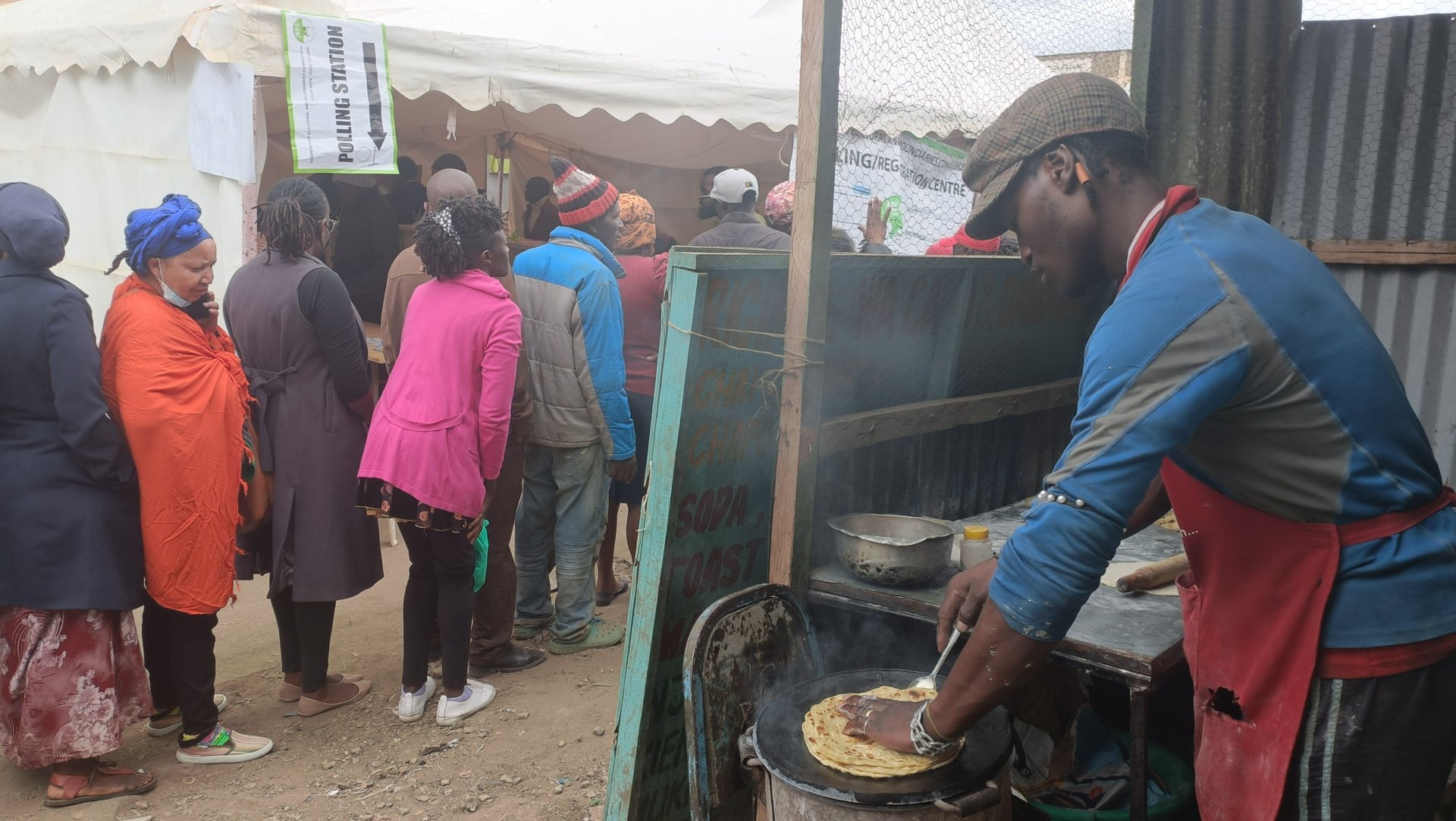Kenya's next president will have to act fast to fix the economy
The new government will have to deal with huge public debt, corruption, and unemployment amidst rising inflation and a declining currency.

Kenyans braved the morning cold on Aug. 9 to vote in an election largely seen as an opportunity to reverse the economic turmoil and plunder hobbling their country.
At the Rongai open-air polling station, 20 kms from Nairobi, two long queues of voters waited outside tents, where clerks helped them elect a new government. The presidential vote pits Raila Odinga, a former prime minister and opposition leader, against William Ruto, the deputy president. Odinga promises economic recovery and a fight against corruption; Ruto’s manifesto centers on what he calls the “bottom-up” economic model.
“It is a moment to reclaim the economic vision that [former president] Mwai Kibaki showed us,” Joyce Mwaniki, a voter, told Quartz. “A time to end mass retrenchment and create business opportunities for all.”
A few meters from the polling clerks is a middle-aged man making chapati, an unleavened flat bread that is a popular street delicacy. Fuelled by rising wheat prices, the size of the chapati has reduced by half in the past four months—precisely the kind of inflation that has been at the heart of electoral issues. Shrinkflation has also hit servings of other foods, such as ugali, mandazi, doughnuts, and beans, as street-food vendors try to maintain prices. Ugali, made from maize flour, is Kenya’s staple food.
Panic buying preceded Kenya’s elections
The previous day, at a supermarket located close to the polling station, five long queues had formed, as people stockpiled food and household supplies. Such panic buying started last week and was evident across the city after the US embassy in Nairobi warned of potential election violence in Kisumu, Odinga’s home city.
Three weeks ago, the price of two kilos of maize flour was $2, but the government issued a subsidy that reduced it to less than $1. By voting day, many retail shops and supermarkets had run out of the subsidized maize flour packets, and most shoppers were buying it at $2. Last February, the Integrated Food Security Phase Classification (IPC) estimated that 3.1 million Kenyans are facing acute food insecurity.
The Kenyan shilling hit an all-time low of 119 against the dollar a day before the polls, and kept plummeting as Kenyans voted in various polling centers across the country. Over 22 million Kenyans are registered to vote.
Kenya’s next government has its work cut out
Kenya’s economic progress has been held hostage by corruption, over-taxation, and unfavorable business environment, which have dragged down confidence among local and foreign investors. Consequently, unemployment has been rising over the years, in a country that is young and raring to work. More than three-quarters of Kenya’s 53 million people are aged under 35, yet the unemployment rate is 39%.
With election results set to be announced by Aug. 16, the next government will inherit a public debt of $80 billion and will have to start the difficult task of stabilising the economy and ending corruption. President Uhuru Kenyatta once estimated that corruption is responsible for the loss of $20 million from government coffers every day.
The job of fixing Kenya’s health, education and manufacturing sectors, which have contributed to economic strife in recent years, will be even more demanding. The state of healthcare in the country is abysmal; the patient-to-doctor ratio is 1:5,700, and Kenyans are charged exorbitant fees for poor health services. The university education curriculum is outdated. The weakness of Kenya’s industrial and export sectors has been the major factor behind the dollar shortage and the plunging local currency.
